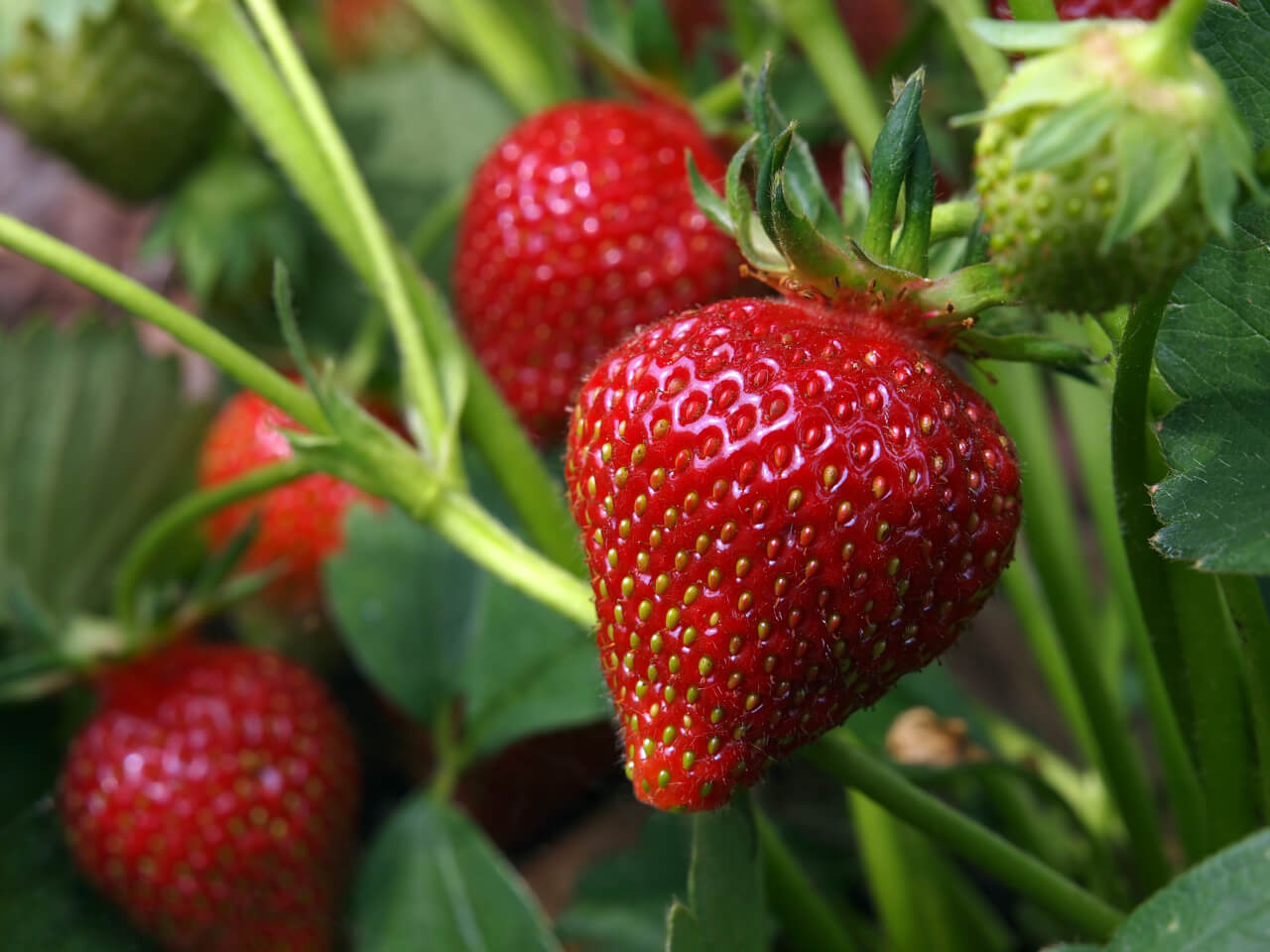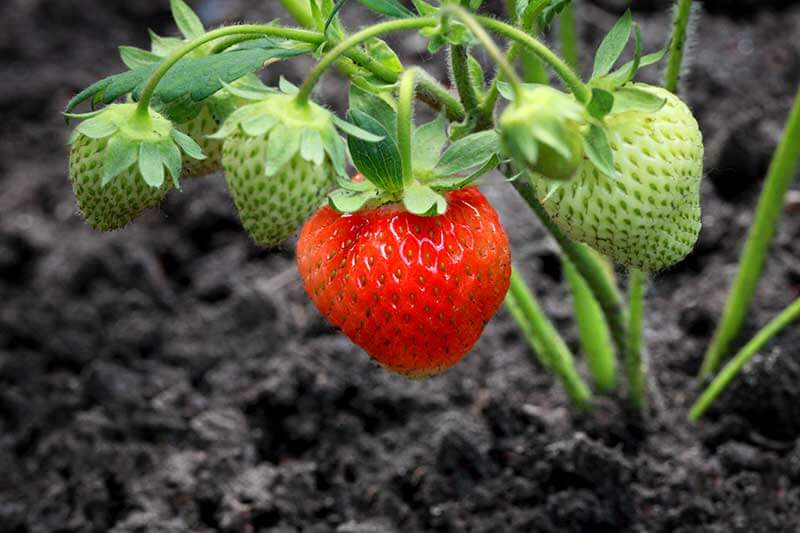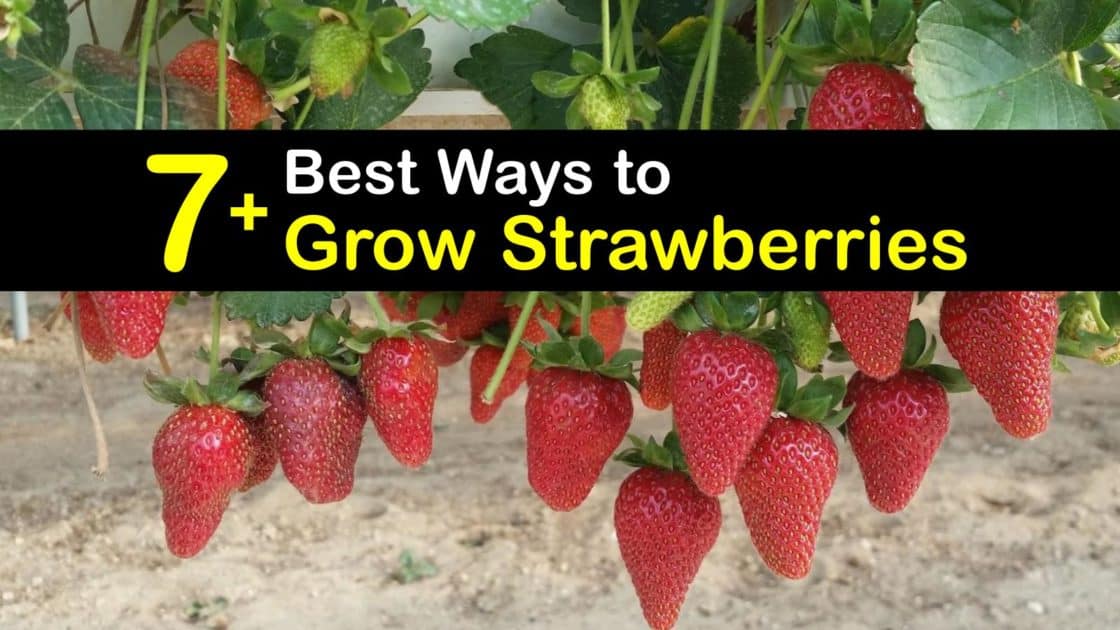Unlocking the Secrets to Thriving Strawberry Plants
Growing strawberries can be a rewarding and delicious experience, but it requires a deep understanding of the key factors that contribute to their success. The best way to grow strawberries involves careful consideration of climate, soil, and variety selection. Strawberries are a versatile fruit that can thrive in a variety of conditions, but they are particularly sensitive to temperature, moisture, and light. By understanding the specific needs of your strawberry plants, you can create an optimal growing environment that promotes healthy growth and maximizes yields.
One of the most critical factors in growing strawberries is climate. Strawberries typically require a cool and moist climate, with average temperatures ranging from 60°F to 70°F (15°C to 21°C). They also require adequate moisture, with most varieties needing around 1 inch of water per week. However, strawberries are also susceptible to extreme weather conditions, such as frost, heatwaves, and drought. By selecting varieties that are resistant to these conditions and providing adequate protection, you can help ensure the success of your strawberry crop.
In addition to climate, soil quality and composition also play a critical role in growing strawberries. Strawberries prefer well-draining, rich soil with a pH between 5.5 and 6.5. They also require adequate nutrients, including nitrogen, phosphorus, and potassium. By testing your soil and amending it as necessary, you can create a fertile growing environment that promotes healthy growth and maximizes yields.
Finally, selecting the right variety of strawberry is crucial for success. With hundreds of varieties to choose from, it can be overwhelming to decide which one to grow. However, by considering factors such as climate, soil, and desired yield, you can select a variety that is well-suited to your specific growing conditions. Some popular varieties include ‘Everbearing’, ‘June-bearing’, and ‘Day-neutral’, each with its own unique characteristics and growing requirements.
Choosing the Perfect Strawberry Variety for Your Garden
With hundreds of strawberry varieties to choose from, selecting the right one for your garden can be a daunting task. However, by understanding the different types of strawberry varieties and their characteristics, you can make an informed decision that will help you achieve the best way to grow strawberries. June-bearing, ever-bearing, and day-neutral are the three main types of strawberry varieties, each with its own unique characteristics and growing requirements.
June-bearing strawberries are the most common type of strawberry variety and are known for their high yields and large fruit size. They produce one large crop in the spring and are ideal for gardens with cool winters and warm summers. Ever-bearing strawberries, on the other hand, produce multiple crops throughout the growing season and are ideal for gardens with mild winters and cool summers. Day-neutral strawberries are a type of ever-bearing strawberry that produces flowers and fruit continuously throughout the growing season, regardless of the day length.
When selecting a strawberry variety, it’s essential to consider your specific climate and growing conditions. If you live in an area with hot summers, you may want to choose a variety that is heat-tolerant, such as ‘Camarosa’ or ‘Ventana’. If you live in an area with cool winters, you may want to choose a variety that is cold-hardy, such as ‘Everbearing’ or ‘Allstar’. Additionally, consider the desired yield and fruit size when selecting a variety. If you want a high yield with large fruit size, June-bearing strawberries may be the best choice. If you want a continuous harvest with smaller fruit size, ever-bearing or day-neutral strawberries may be the best choice.
Ultimately, the best way to grow strawberries is to choose a variety that is well-suited to your specific climate and growing conditions. By doing so, you can ensure a healthy and productive strawberry crop that will provide you with delicious fruit for years to come.
Preparing the Ideal Soil for Strawberry Growth
Soil quality and composition play a critical role in the success of strawberry plants. The best way to grow strawberries requires a well-draining, fertile soil with a pH between 5.5 and 6.5. Strawberries prefer a slightly acidic to neutral soil pH, as this allows for optimal nutrient uptake and root growth. A pH range of 5.5 to 6.5 also helps to prevent nutrient deficiencies and reduces the risk of soil-borne diseases.
In addition to pH, strawberry plants require a balanced mix of nutrients to thrive. Nitrogen, phosphorus, and potassium are the three primary macronutrients essential for strawberry growth. Nitrogen promotes leaf growth and development, phosphorus supports root growth and fruiting, and potassium helps to regulate water balance and overall plant health. A balanced fertilizer with a ratio of 10-10-10 (nitrogen-phosphorus-potassium) is a good starting point for strawberry plants.
Soil preparation is also crucial for strawberry growth. Before planting, it’s essential to test the soil to determine its pH and nutrient levels. Based on the test results, amend the soil with organic matter such as compost or well-rotted manure to improve its structure and fertility. Remove any debris, rocks, or weeds that can compete with the strawberry plants for water and nutrients.
When preparing the soil for strawberry plants, it’s also important to consider the soil’s water-holding capacity. Strawberries prefer a consistent moisture level, but they don’t like to be waterlogged. Adding organic matter such as compost or peat moss can help to improve the soil’s water-holding capacity and reduce the risk of waterlogging.
By preparing the ideal soil for strawberry growth, you can create a fertile and supportive environment that promotes healthy growth and maximizes yields. Remember to test the soil regularly and amend it as necessary to ensure optimal growing conditions for your strawberry plants.
How to Plant Strawberries for Maximum Yield
Planting strawberries is a crucial step in achieving a bountiful harvest. To ensure maximum yield, it’s essential to follow a step-by-step guide on how to plant strawberries correctly. The best way to grow strawberries requires careful consideration of spacing, depth, and watering requirements, as well as tips for transplanting and establishing a healthy root system.
Before planting, prepare the soil by loosening it to a depth of 12-18 inches. Remove any debris, rocks, or weeds that can compete with the strawberry plants for water and nutrients. If you’re using a container, make sure it has drainage holes to prevent waterlogging.
Space strawberry plants 12-18 inches apart, depending on the variety. June-bearing strawberries require more space than ever-bearing or day-neutral varieties. Plant the strawberries at a depth of 6-8 inches, making sure the crown (where the roots and leaves meet) is above the soil surface.
Water the strawberries thoroughly after planting, and keep the soil consistently moist during the first few weeks. Avoid overwatering, which can lead to root rot and other problems. As the plants grow, reduce watering to about 1 inch per week.
Transplanting strawberries can be a bit tricky, but with the right techniques, you can minimize stress and ensure a healthy root system. Dig a hole that’s twice as wide and just as deep as the root ball. Gently remove the plant from its container, taking care not to disturb the roots. Place the plant in the hole, making sure the crown is above the soil surface. Fill in the hole with soil, and water thoroughly.
Establishing a healthy root system is critical for strawberry plants. To promote root growth, avoid compacting the soil around the plants. Instead, use a mulch or straw to retain moisture and suppress weeds. As the plants grow, you can also use a fertilizer specifically formulated for strawberries to promote healthy growth and fruiting.
By following these steps and tips, you can ensure a successful strawberry harvest and enjoy the fruits of your labor. Remember to monitor your plants regularly and adjust your care routine as needed to achieve the best way to grow strawberries.
Essential Care and Maintenance for Healthy Strawberry Plants
Once strawberry plants are established, they require ongoing care and maintenance to ensure optimal growth and productivity. The best way to grow strawberries involves providing the right conditions for healthy growth, including adequate watering, fertilizing, pruning, and pest management.
Watering is a critical aspect of strawberry care. Strawberry plants require consistent moisture, especially during the first few weeks after planting. Aim to provide about 1 inch of water per week, either through rainfall or irrigation. Avoid overwatering, which can lead to root rot and other problems.
Fertilizing is also essential for healthy strawberry growth. Use a balanced fertilizer specifically formulated for strawberries, and follow the manufacturer’s instructions for application rates. Fertilize strawberry plants in the early growing season, and again after harvesting to promote new growth.
Pruning is another important aspect of strawberry care. Remove any dead or damaged leaves or flowers to promote healthy growth and prevent disease. Prune strawberry plants in the early growing season, and again after harvesting to encourage new growth.
Pest management is also crucial for healthy strawberry growth. Keep an eye out for common pests like aphids, slugs, and snails, and use organic or integrated pest management (IPM) methods to control infestations. Use physical barriers, like copper tape or fine mesh, to deter slugs and snails.
Common issues and challenges that can impact strawberry growth and productivity include powdery mildew, botrytis, and crown rot. To prevent these problems, ensure good air circulation, water carefully, and avoid overfertilizing. Use organic or IPM methods to control infestations, and remove any infected plants to prevent the spread of disease.
By following these essential care and maintenance tips, you can ensure healthy and productive strawberry plants that will provide you with a bountiful harvest. Remember to monitor your plants regularly and adjust your care routine as needed to achieve the best way to grow strawberries.
Maximizing Your Harvest: Tips for Prolonging the Strawberry Season
One of the most rewarding aspects of growing strawberries is enjoying a bountiful harvest. However, the strawberry season can be relatively short, typically lasting from 3 to 6 weeks. To maximize your harvest and prolong the strawberry season, there are several techniques you can use.
Encouraging repeat flowering is one way to extend the strawberry season. This can be achieved by providing strawberry plants with optimal growing conditions, including adequate water, nutrients, and sunlight. You can also use techniques such as pinching off flower buds to encourage the plant to produce more flowers.
Using row covers is another way to prolong the strawberry season. Row covers are lightweight, breathable fabrics that can be placed over the strawberry plants to protect them from extreme weather conditions, such as frost, heat, and wind. This can help to extend the strawberry season by several weeks.
Protecting strawberry plants from extreme weather conditions is also crucial for prolonging the strawberry season. This can include using techniques such as mulching, which can help to retain moisture and regulate soil temperature. You can also use physical barriers, such as cold frames or hoop houses, to protect strawberry plants from frost and other extreme weather conditions.
In addition to these techniques, there are several other ways to maximize your strawberry harvest and prolong the strawberry season. This can include using strawberry varieties that are specifically bred for their ability to produce multiple crops, such as ever-bearing or day-neutral varieties. You can also use techniques such as succession planting, which involves planting multiple crops of strawberries at different times to extend the harvest season.
By using these techniques, you can maximize your strawberry harvest and prolong the strawberry season. This can help to ensure a bountiful supply of fresh, delicious strawberries for several weeks, and can also help to make the most of your strawberry plants.
Common Mistakes to Avoid When Growing Strawberries
While growing strawberries can be a rewarding experience, there are several common mistakes that can impact the health and productivity of the plants. By being aware of these potential pitfalls, gardeners can take steps to avoid them and ensure a bountiful harvest. Here are some of the most common mistakes to avoid when growing strawberries:
Overwatering is one of the most common mistakes made when growing strawberries. Strawberries need consistent moisture, especially when they’re producing fruit, but too much water can lead to root rot and other problems. To avoid overwatering, check the soil regularly and only water when it feels dry to the touch. It’s also important to avoid getting water on the leaves or crown of the plant, as this can encourage fungal diseases.
Underwatering is another common mistake that can impact strawberry growth. Strawberries need about 1 inch of water per week, either from rainfall or irrigation. If the soil is too dry for too long, the plants may become stressed, leading to reduced fruit production and increased susceptibility to disease.
Inadequate soil preparation is another mistake that can impact strawberry growth. Strawberries prefer well-draining, rich soil with a pH between 5.5 and 6.5. If the soil is too dense or lacking in nutrients, the plants may struggle to thrive. To avoid this mistake, test the soil before planting and amend it as necessary.
Not providing enough sunlight is another common mistake made when growing strawberries. Strawberries need full sun to produce well, so choose a location that gets at least 6 hours of direct sunlight per day. If this isn’t possible, consider using grow lights to supplement the natural light.
Not fertilizing regularly is another mistake that can impact strawberry growth. Strawberries are heavy feeders and need regular fertilization to produce well. Use a balanced fertilizer (such as 10-10-10) and follow the instructions on the package for application rates.
Not pruning regularly is another mistake that can impact strawberry growth. Strawberries need regular pruning to encourage new growth and prevent the plants from becoming too leggy. Remove any dead or damaged leaves or flowers, and trim back the plants after they finish producing fruit.
By avoiding these common mistakes, gardeners can help ensure a healthy and productive strawberry crop. Remember to provide consistent moisture, adequate sunlight, and regular fertilization, and to prune the plants regularly to encourage new growth. With proper care and attention, strawberries can be a rewarding and delicious addition to any garden.
Enjoying the Fruits of Your Labor: Using Your Homegrown Strawberries
After months of careful planning, planting, and tending, the moment of truth has finally arrived – it’s time to harvest and enjoy your homegrown strawberries There’s nothing quite like biting into a juicy, sweet strawberry that you’ve grown yourself, and the sense of pride and accomplishment that comes with it is unbeatable.
One of the best ways to enjoy your homegrown strawberries is to eat them fresh, straight from the garden. Simply rinse them with cool water, pat them dry with a clean towel, and serve them as is or with a dollop of whipped cream or a sprinkle of sugar. You can also add them to salads, blend them into smoothies, or use them as a topping for yogurt or oatmeal.
If you’re looking for ways to preserve your strawberry harvest, there are several options to consider. One popular method is to freeze them, either whole, sliced, or pureed. Simply rinse and dry the strawberries as described above, then spread them out on a baking sheet and place it in the freezer. Once they’re frozen solid, transfer them to airtight containers or freezer bags and store them in the freezer for up to 8 months.
Another way to preserve strawberries is to make jam or preserves. This is a great way to enjoy your strawberries year-round, and it makes a wonderful gift for friends and family. Simply combine the strawberries with some sugar and pectin (a natural occurring substance that helps to thicken the jam), and cook them over low heat until the mixture has thickened and passed the “wrinkle test” (when you place a small amount of the jam on a chilled plate, it should wrinkle when pushed with your finger).
Strawberries are also a great addition to baked goods, such as muffins, cakes, and scones. Simply chop them up and add them to your favorite recipe, or use them as a topping for pancakes or waffles.
Finally, don’t forget to share your bounty with friends and family Strawberries make a wonderful gift, and they’re a great way to brighten up someone’s day. Consider making a strawberry basket or bouquet, or simply packaging them up in a cute container and delivering them to a neighbor or coworker.
No matter how you choose to enjoy your homegrown strawberries, the most important thing is to have fun and be creative With a little bit of imagination and experimentation, you can come up with all sorts of delicious and innovative ways to use your strawberries. Happy harvesting and happy eating!









:max_bytes(150000):strip_icc()/how-to-grow-strawberries-from-seed-2539934-01horizontal-dd27fcc730074cb49e9bd13e607b48f6.jpg)